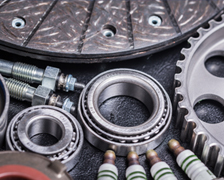Introduction of metal welding
- Time of issue:2020-11-07
- Views:0
Introduction of metal welding
1.Stainless steel welding
The high-speed laser welding technology of thin stainless steel is mainly used for fuel cell assembly. In a typical fuel cell, the rectangular bipolar plate is made of 0.1 mm stainless steel and has a stamped channel structure, which needs to be connected to form a sealed assembly with internal channels.

The specific task is
(1) Carry out continuous welding beside each channel, strengthen the structure and seal the plate along the periphery to form a sealing system. Compare different high-brightness lasers
The so-called bump effect is the limiting factor for the maximum achievable welding speed. The bulge is characterized by the instability of the keyhole, which leads to severe undercut and periodic droplets on the surface of the weld.
The laser source provides high brightness and excellent beam quality, which can push the beginning of the hump to a higher welding speed. Connect two sheets each with a thickness of 0.1 mm at a speed of 50 m/min.
2.Aluminum copper welding
In many battery joint designs, there is a great need for copper's excellent electrical and thermal properties and a higher strength-to-weight ratio at a lower aluminum price. Therefore, a reliable connection technology between Al and Cu and its alloys has been developed.
Maximum welding speed depending on material thickness
Existing connection processes (such as ultrasonic, friction or resistance welding) are usually not suitable for applications that require flexible, non-contact connection technologies, which only require one-sided access to the connection. In contrast, the laser welding process has the potential to eliminate most of the problems associated with joining dissimilar materials. However, this needs to overcome the welding challenges based on the physical and metallurgical properties of Cu-Al joints. The metallurgical affinity of the two metals is very low and leads to the formation and growth of various intermetallic phases, which in turn leads to brittle phases, microcracks and macrocracks. Some methods proposed in the literature to improve the performance of welded joints include
(1) Reduce the total number and volume of intermetallic phases in the welded structure,
(2) Eliminate the segregation of high-melting phase and low-melting phase, and introduce filler materials, which produce favorable metallic phases in the welding zone
Related News






Contact Us

Scan to add WeChat
Links:
© 2022 Shenzhen SHINHOP Laser Equipment Co., Ltd. All rights reserved. 粤ICP备15057663号 Powered by www.300.cn SEO


